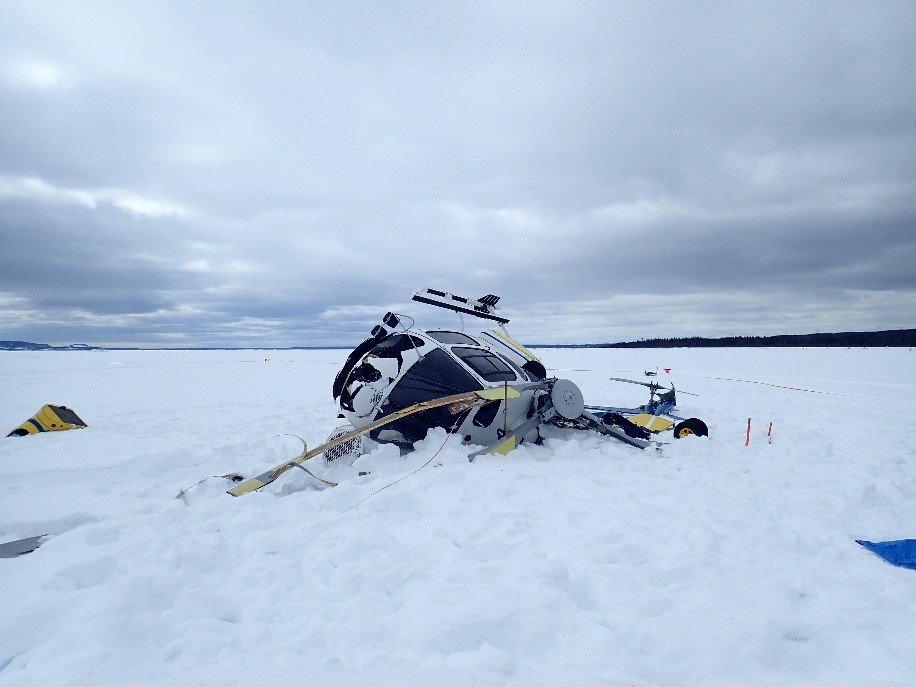Air transportation safety investigation A22Q0029
The TSB has completed this investigation. The report was published on 25 October 2022.
Table of contents
Controlled flight into terrain
Airbus AS350 B2 (helicopter), C-GFBW
Sept-Îles Airport, Quebec, 7.5 NM W
The occurrence
An Airbus Helicopters AS350 B2 was on a private visual flight rules flight from the Héli-Boréal facility located 7 nautical miles northwest of the Sept-Îles Airport, to Québec, Quebec. During takeoff, the aircraft’s windshield suddenly iced up. The pilot began his descent toward the frozen surface of Baie des Sept Îles in order to land. While still in motion, the aircraft came into contact with the frozen surface. The aircraft rolled over and came to rest on its side. The pilot and passenger were able to evacuate the aircraft without difficulty and were taken to the Sept-Îles hospital. The aircraft was destroyed.
Media materials
News release
Investigation report: Controlled flight into terrain near Sept-Îles, Quebec
Read the news release
Deployment notice
TSB is deploying a team of investigators following a collision with the frozen surface at the mouth of the Rivière des Rapides west of Sept-Îles (Québec)
Dorval, Quebec, 18 March 2022 — The Transportation Safety Board of Canada (TSB) is deploying a team of investigators following the collision of a helicopter with the frozen surface at the mouth of the Rivière des Rapides west of Sept-Îles, Quebec, yesterday. The TSB will gather information and assess the occurrence.
Investigation information
Map showing the location of the occurrence
Investigator-in-charge

Kristina Schoos has more than 15 years’ experience as a helicopter pilot with various 702 and 703 operators, during which she has accumulated more than 6000 hours’ flying time across the country on 6 different types of helicopters, including the Bell 206 and Aerospatiale AS350. In the course of her career, she has been responsible for flight and ground training and has worked as assistant chief-pilot. Ms. Schoos also holds a Bachelor of Science in Nursing.
Photos
Class of investigation
This is a class 4 investigation. These investigations are limited in scope, and while the final reports may contain limited analysis, they do not contain findings or recommendations. Class 4 investigations are generally completed within 220 days. For more information, see the Policy on Occurrence Classification.
TSB investigation process
There are 3 phases to a TSB investigation
- Field phase: a team of investigators examines the occurrence site and wreckage, interviews witnesses and collects pertinent information.
- Examination and analysis phase: the TSB reviews pertinent records, tests components of the wreckage in the lab, determines the sequence of events and identifies safety deficiencies. When safety deficiencies are suspected or confirmed, the TSB advises the appropriate authority without waiting until publication of the final report.
- Report phase: a confidential draft report is approved by the Board and sent to persons and corporations who are directly concerned by the report. They then have the opportunity to dispute or correct information they believe to be incorrect. The Board considers all representations before approving the final report, which is subsequently released to the public.
For more information, see our Investigation process page.
The TSB is an independent agency that investigates air, marine, pipeline, and rail transportation occurrences. Its sole aim is the advancement of transportation safety. It is not the function of the Board to assign fault or determine civil or criminal liability.
